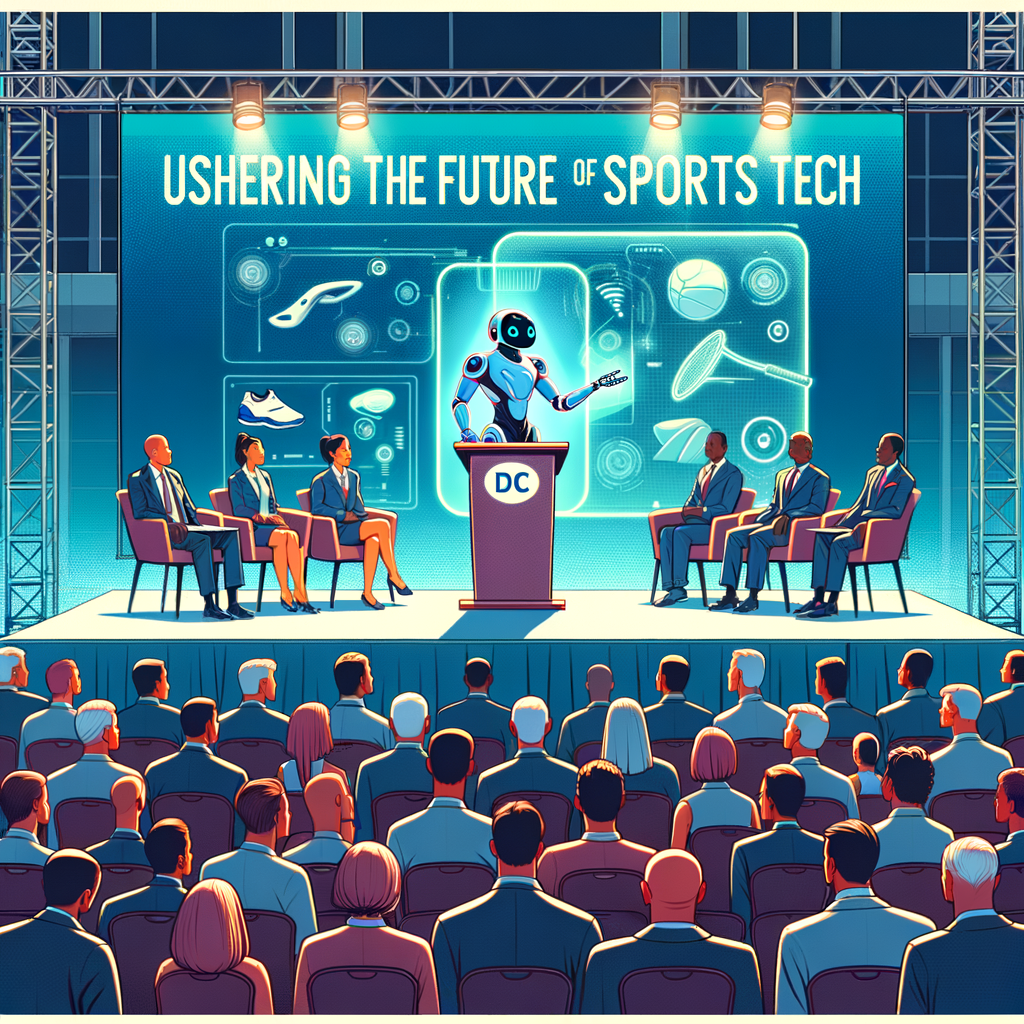Welcome to the Enhanced Future of Sports
Once upon a time, sports technology meant things like the Jumbotron, player statistics, and maybe even a Fitbit or two. Fast forward to 2024, and it’s clear that the landscape has evolved dramatically. Innovation has surged beyond the athlete’s body and mind, pushing coaches, fans, and even regulators to reconsider the entire ecosystem surrounding sports.
At the DC conference, steering panels featuring star athletes, engineers, and venture capitalists lit up the room. One overarching theme was present: the future of sports tech isn’t just reactive, it’s proactive. That means equipment is getting smarter, and so are the fields, wearables, and even the broadcasts. Here’s a quick breakdown of why that matters:
- Smarter Training: Advanced algorithms are increasingly being used to optimize an athlete’s movements, gauge their health in real time, and prevent injuries before they even occur. Forget training montages as we know them—think micro-adjustments to help runners shave a few milliseconds off their personal best.
- Fan Experience Redefined: Imagine being in the nosebleed section but still feeling like you’re front and center of the action. Interactive fan tools, multi-angle replays, and immersive virtual reality are now positioned to blur the line between the stadium and the living room.
- Strategic Decisions with Data-Driven Insight: Coaches and managers are increasingly relying on tech-enhanced analysis to strategize in real-time, utilizing everything from opponent heatmaps to fatigue predictions. With this, conventional ‘gut instincts’ are evolving to sharper, data-backed calls.
Sports, But With Enhanced Storytelling
Another crucial element bubbling to the surface at this conference was how rapidly data-enhanced storytelling is changing the way we consume sports. Sports commentary has always been about the art of story, but now, data is being wielded in new ways to enhance that narrative.
Broadcasters are using immersive, multi-angle holograms that allow fans to look at plays from any perspective, and pundits are diving deep into the analytics to provide context beyond what’s visible on the field. What’s more exciting? Companies are also swooping in to offer deeper match insights to fans beyond mere statistics, which means you’ll still hear about the underdog triumph and those too-close-to-call moments, but with full context backed by patterns and accurate predictions.
Imagine not only knowing that a batter is 3-for-4 in previous matchups, but also *why*—whether it’s the pitcher’s arm angle or the specific weather conditions that create these streaks.
The Role of Tech Companies in Shaping Sports Tech
In another pivotal conversation, several high-profile leaders from various tech firms hinted at building out deeper collaborations with sports franchises to ensure this evolution doesn’t stop at the player level. Here’s where things get especially interesting. Several tech companies are introducing innovations poised to not only improve athletic performance but also drive efficiency for teams looking to streamline operations.
Instead of teams signing players or making trades merely based on subjective scouting or traditional, past performance metrics, teams are now leaning into tools that would offer predictive analysis on everything from durability, market exposures, and potential end-of-career value. After all, sports are also a business—and businesses want returns on their investments.
More than that, though, the heads in attendance discussed specific ways in which this tech could trickle down to grassroots sports, making pro-grade insights available to everyone from weekend warriors to high school teams hoping for that Cinderella story.
Regulation: Where The Ball Gets Intercepted?
One key topic that lingered in every corner of the conference was regulation. Major sports leagues and government agencies are now beginning to scrutinize the over-abundance of tech in sports. How do you regulate the increasing reliance on tech without sacrificing the integrity of the game? Will sports become more predictable, or even—dare we say it—too “fair” as personal optimization and real-time feedback tools roll out universally?
And don’t forget the ethical quagmire. The conference saw several lively discussions by legal developers about the role of personal data in all of this. After all, if an athlete’s heart rate, muscle strain, and even sleep patterns are all being tracked, who owns that data? Is it the player? The team? Or the company that produces the wearable tech?
The answers to these questions remain fuzzy, and perhaps they will for some time. Still, what was clear throughout DC was that regulators are going to need to keep up with the shifting playing field, something many in attendance felt was traditionally *not* a strong suit for government entities when it comes to tech advancement.
Closing Thoughts: The Tech MVP Comes to Sports
There’s no doubt about it: sports as we know them are going through a metamorphosis. With cutting-edge technology poised to enhance everything from how athletes train, to how fans consume sports, there’s an unmistakably electric feeling pulsating through the entire field.
In DC, panelists and experts agreed on one overarching conclusion: in the years ahead, tech will not merely be a supporting character in sports—it’s going to be an MVP.
But, as with any major player on the field, its role will need to be carefully managed, fine-tuned, and above all, never allowed to overshadow the beautiful unpredictability that keeps us all glued to the action. After all, isn’t it those moments of pure, unscripted brilliance that make sports truly worth watching?
The biggest takeaway? We’ve only scratched the surface of what’s to come. And whether you’re an athlete, a coach, or just someone who loves the thrill of the game, it’s going to be quite the ride. Grab your gear, folks; we’re just getting started.










